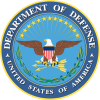51st Fighter Wing, US Air Force
51ST FIGHTER WING, US AIR FORCE
History: Established as 51 Fighter Wing on 10 August 1948. Activated on 18 August 1948. Redesignated as 51 Fighter-Interceptor Wing on 1 February 1950. Inactivated on 31 May 1971. Redesignated as 51 Air Base Wing on 20 October 1971. Activated on 1 November 1971. Redesignated as: 51 Composite Wing (Tactical) on 30 September 1974; 51 Tactical Fighter Wing on 1 July 1982; 51 Wing on 7 February 1992; 51 Fighter Wing on 1 October 1993. In 1948, assumed air defense of Ryukyu Islands. Commenced combat operations over Korea in September 1950 with combat air patrols, close air support, and armed reconnaissance missions in support of UN forces. Operated a detachment at Suwon AB, Korea, beginning in May 1951, and relocated there in October 1951, with maintenance and supply elements remaining in Japan until August 1954. Ceased combat 27 July 1953. Wing pilots claimed 312 victories against enemy MiG jet fighters, including the first USAF victory in the first all-jet aerial battle on 8 November 1950. Following the cease-fire, resumed air defense of the Ryukyu Islands. From August 1954 through early 1971, frequently deployed aircraft, crews, and support personnel throughout the Far East, including Korea, Japan, Taiwan, and the Philippines. Stationed one squadron (16 Fighter-Interceptor) at Tainan, Taiwan, 29 August 1958-26 January 1959 during the Quemoy-Matsu Crisis to fly combat air patrol for Nationalist Chinese Air Force supply flights. Following the seizure of the USS Pueblo by North Korea, deployed one squadron (82 Fighter-Interceptor) and support personnel to Suwon AB, Korea, 30 January-20 February 1968, and sent other personnel to Osan AB, South Korea, to support the 314 Air Division. Deployed an interceptor detachment to Suwon AB, South Korea, from Jun 1968 through 1970. In Nov 1971, served primarily as a support wing for Osan AB and the Koon-Ni range complex, and, after 15 April 1975, for Taegu AB, South Korea. Added a tactical mission on 30 September 1974. The wing lost control of Taegu AB from Oct 1978 to January 1982. In 1982, the wing gained a close air support capability to complement its air superiority role. Frequently deployed aircraft and crews to participate in training exercises throughout the Far East during this period. In addition, aircrews trained to perform fast forward air control missions beginning in 1984. In 1988-1989, mission shifted to offensive counterair and all-weather air interdiction. Restored tactical air control capabilities in October 1990, and, in September 1991, became the first operational F-16 unit to employ laser targeting with the LANTIRN navigation and targeting system. Airlift support operations were augmented with the addition of a flight of light transports in August 1992. Took part in a series of joint and combined training exercises for the defense of the Republic of Korea (ROK).
| English | blazon wanted |
Origin/meaning
The Emblem was approved for group on 5 February 1942, revised on 3 November 2010.
Literature:Image from Wikimedia Commons
US heraldry portal
This page is part of the US heraldry portal |
Heraldry of the World |
|
US heraldry:
|
Ecclesiastical Heraldry of the USA:
Military Heraldry: |
Contact and Support
Partners:
Your logo here ?
Contact us
© since 1995, Heraldry of the World, Ralf Hartemink
Index of the site





